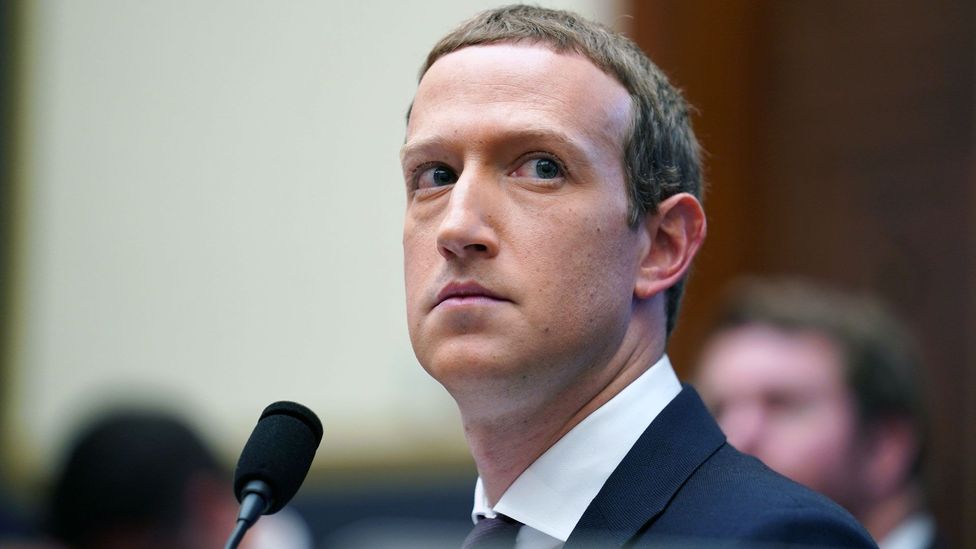The head of McDonald’s earns a whopping 1,939 times more than the company’s median worker. At Facebook, it’s 94 times more. And these aren’t the most extreme examples.
Many people feel that the gap between a company’s highest and median pay, known as its pay ratio, shouldn’t be sky high – an opinion that’s held around the world and across ideological lines. Increasingly, government officials are taking notice, and subsequently proposing taxes on companies that maintain pay ratios over a certain threshold.
These measures, which have been increasing in the past few years, take aim at inequality, and generate revenue to fund vital public services. They’re also an uplifting way for people to feel like change is in motion. But despite the upsides, some people are warning that these taxes could have worrying effects.
‘Almost too large to comprehend’
In 2019, among the 500 largest companies listed on one of the US stock exchanges, the average gap between CEO and median worker pay was 264:1.
“The scale is almost too large to comprehend without some type of external source informing you,” says Bhavya Mohan, a marketing professor at the University of San Francisco. (Indeed, in one study, participants guessed that the ratio between top pay and average unskilled pay was less than 10% of the actual figure.) Mohan started her research in this area “because when I first stumbled upon what CEO pay ratios are like at large, publicly traded companies, I was shocked”.
Along with generating outrage, knowledge of these figures can influence the way consumers act: Mohan’s research showed that in Switzerland, sales dropped at companies with skewed ratios following news coverage of these pay discrepancies. And in one study she and her colleagues conducted, US consumers were offered a gift card to one of two comparable clothing retailers, Gap Inc. (which at that point had a pay ratio of 705:1) and Urban Outfitters (whose pay ratio was only 3:1). When the shoppers learned about these pay ratios, “the preferences completely shifted”, says Mohan.

Portland, the largest city in the state of Oregon, was the first to successfully implement a tax on high pay ratios (Credit: Getty Images)
Of course, this was a controlled experiment, and Mohan acknowledges that information about business practices has to be clearly apparent to potential customers (rather than buried in annual financial statements) to have any likely impact on their purchasing behaviour. But this information helps demonstrate widespread outrage about salary inequality, which has got much worse since the 1980s and the rise of free-market ideology (notably Thatcherism in the UK and Reaganomics in the US). Average CEO pay in the US climbed more than 900% between 1978 and 2014 – compared to just 11% for average worker pay. These practices have continued even during the Covid-19 pandemic, with a number of companies cutting lower-paid jobs while boosting the compensation packages of executives.
Gaining momentum
All of this has spurred activists against extreme pay ratios to push harder for action – especially in the US, which has the world’s most severe corporate inequality.
One way to address the issue is levying taxes against the worst offenders. Portland, the largest city in the state of Oregon, was the first to successfully implement a tax on high pay ratios (although it wasn’t the first to try). In 2016, the city passed a law levying a 10% tax surcharge on any publicly traded company operating locally if the CEO earned at least 100 times the median pay. The tax rose to 25% for a 250:1 ratio. According to a spokesperson for the City of Portland, in 2019, the last full year for which data is available, the Pay Ratio Surtax raised close to $4.9m (£3.46m).
The tax amounts raised each year have been modest, but proponents of the law have said that the intent was to inspire others. And this seems to have worked. In 2020, San Francisco passed a similar law. In March 2021, the Tax Excessive CEO Pay Act was introduced in Congress. Lawmakers have proposed a number of similar bills around the country, some of which go further than the pioneering Portland law. San Francisco’s measure will apply to the gross receipts of large private and public companies alike, and is expected to raise at least 12 times as much revenue as Portland’s. The proposed Tax Excessive CEO Pay Act would be triggered at the 50:1 level for companies earning at least $100m a year.
Sarah Anderson of the Institute for Policy Studies, who is one of the US’s foremost advocates for narrower pay ratios, believes that now is a key time to propel the movement around lower pay ratios. “I think there’s momentum because we’ve just gone through a year when frontline essential workers demonstrated how essential they are to our economy and our public health. And it makes it even more obvious that it’s not one individual in the CEO office who is practically singlehandedly creating corporate value.” Yet many corporate reward practices stubbornly stick to this idea that one person at the top should get all the credit.
Along with placating workers and generating some revenue, Anderson hopes that companies will not see the measures as purely punitive, but rather something that could end up benefitting them. “I hope that more and more companies will see that this is good for the bottom line to narrow these gaps, and that it will bring out the best in their employees that they feel like they’re getting a fair reward for their pay,” adds Anderson. She thinks that a ratio around 25:1 would be fair. In other words, if a CEO makes $5m, median pay at that firm should reach $200,000.
As effective as advertised?
However, not everyone is sold.
More than any other country, the US has a long history of both requiring CEO pay disclosure and trying to effect change around dramatic pay ratios. Although meant to be helpful, these attempts have all done more harm than good, says Kevin Murphy, a professor of finance and economics at the University of Southern California.
In fact, according to Murphy, one reason top-brass pay is so high in the US is because of past well-intentioned legislation that ended up making the problem worse, instead of dampening CEO compensation as intended. Now, for instance, enormous executive pay generally doesn’t come in the form of base salaries, but in performance-linked stocks and shares. Pay packages are composed this way partly in response to a 1993 law that set a $1m limit on how much of executive salaries companies could deduct from tax. The law generally didn’t lead to lower executive salaries as hoped – and compensation packages actually increased overall because companies became extra generous with bonuses instead.
Murphy argues that revolts against high CEO pay, like the movement to tax large pay ratios, are politically motivated, not based on sound economics. For one thing, companies are ingenious in finding ways around these kinds of taxes.

These new measures would push to tax corporations at which there is a staggeringly large pay ratio (Credit: Alamy)
Plus, people like Murphy contend that taxing pay ratios is a blunt instrument for attempting to tackle pay inequality. Many global companies have high ratios because they employ lots of part-time workers (like Starbucks, whose pay ratio is 1,675:1) or employees based in lower-income countries; conversely, some companies have low ratios because technically their franchises are treated as independent entities. A pay ratio tax may end up being a tax on industries dependent on low-skilled workers. “That ratio itself doesn’t tell us a lot about income inequality, or even how much the CEO is making. It tells us a lot more about what the what the structure of the business is,” says Murphy.
These taxes probably won’t transform the pay practices of large companies, says Ani Huang, who leads the Center on Executive Compensation, a Washington, DC-based organisation representing HR executives. She believes that because executive compensation is fundamentally market- and performance-based, “increasing taxes based on the ratio of the CEO’s pay to the pay of the median employee is unlikely to change this basic premise” of how companies determine executive pay.
Indeed, the Portland Business Alliance, which has been opposed to the surtax there, is unaware of any members changing their practices in response to the tax. On the other hand, affected companies haven’t pulled out of Portland to avoid paying it.
If the last few decades are any indication, CEO pay will only continue to get more inflated, even despite measures like pay ratio taxes. But more and more, legislators and campaigners will be watching – and likely getting bolder about tackling it head-on. So, while these pay ratio taxes may not drive much immediate change in corporate pay practices, they are driving more attention to outrage against salary inequality.
Either way, the tax will still bring in some money for public services, and so campaigner Anderson argues that this is a win-win situation. “Companies do have a choice: they can either narrow their gaps by cutting CEO pay or lifting up worker pay, or they can pay a bit more in taxes… and we can use that to help reduce inequality in other ways.”
"pay" - Google News
June 10, 2021 at 02:00PM
https://ift.tt/3goIm68
The push to penalise big corporations with huge pay gaps - BBC News
"pay" - Google News
https://ift.tt/301s6zB
Bagikan Berita Ini















0 Response to "The push to penalise big corporations with huge pay gaps - BBC News"
Post a Comment